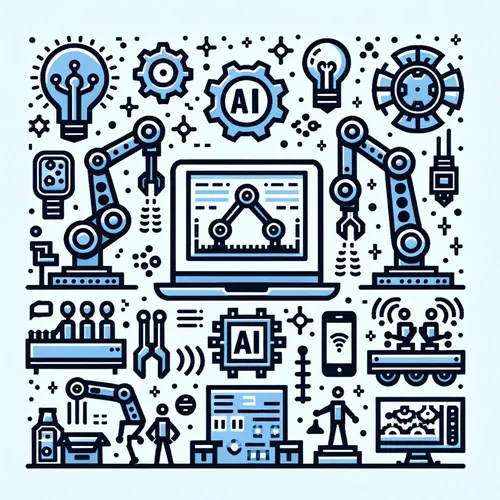Robots Gossip: AI Matchmaking, Cobot Besties, and Juicy Automation Secrets Revealed!
- Author
- Quiet. Please
- Published
- Sat 30 Aug 2025
- Episode Link
- https://www.spreaker.com/episode/robots-gossip-ai-matchmaking-cobot-besties-and-juicy-automation-secrets-revealed--67560632
This is you Industrial Robotics Weekly: Manufacturing & AI Updates podcast.
This week in industrial robotics and manufacturing automation, the story is all about smarter machines, closer collaboration between humans and robots, and the pivotal role of artificial intelligence reshaping shop floors worldwide. According to the International Federation of Robotics, the global value of industrial robot installations has reached a record sixteen and a half billion US dollars, signaling robust growth as manufacturers ramp up investments in technology innovation. One of the most transformative developments is the move toward intelligent, self-operating systems that adapt in real time using artificial intelligence, machine learning, and the Industrial Internet of Things. In practice, this means manufacturers are deploying robots capable of advanced data interpretation, predictive maintenance, and real-time process optimization. Hanwha Group reports that nearly nine out of ten manufacturers now plan to integrate AI across their production—especially for applications like automated quality control and instant defect detection—delivering both higher consistency and faster throughput.
Warehouse automation continues its rapid ascent as well, underscored by the increasing adoption of plug-and-produce robotics solutions. Platforms like the RO1 from Standard Bots showcase flexible automation for complex tasks—think pick-and-place operations, precision assembly, and materials handling—that are accessible to companies without specialized programming expertise. This lowers barriers for small and mid-sized manufacturers and accelerates return on investment thanks to easier implementation and scalability. WiredWorkers emphasizes that modular, ready-to-deploy solutions are leading to faster process optimization, giving companies the agility needed for today’s personalized production demands.
On the ground, human-cobot collaboration is getting safer and more seamless as advanced sensors and AI-powered safety protocols become standard. Cobots now routinely undertake repetitive or hazardous tasks alongside employees, freeing workers to focus on strategic, value-added activities and resulting in both higher productivity and improved workplace safety. According to Robotnik, the rollout of intuitive user interfaces and simplified programming broadens cobot adoption, particularly among smaller businesses looking for cost-effective automation.
Recent case studies highlight impressive efficiency gains: in the aerospace and electronics sectors, for instance, AI-driven robotics have enabled near-zero-defect assembly lines and significant reductions in unplanned downtime. Market data indicates that scalable automation is also unlocking new business models, from on-demand small-batch manufacturing to just-in-time logistics.
For manufacturers looking to act, the practical takeaway is clear. Assess your readiness to adopt AI-enhanced automation, prioritize modular and flexible solutions to enable quick scaling, and invest in training programs supporting human-robot collaboration. Looking forward, as Industry Four Point Zero accelerates, expect further convergence of digital twins, generative AI for process simulation, and expanded roles for humanoid robots in logistics and assembly.
Thank you for tuning in to Industrial Robotics Weekly. Make sure to come back next week for more updates on manufacturing, automation, and the future of industry. This has been a Quiet Please production, and for more, check out Quiet Please Dot A I.
For more http://www.quietplease.ai
Get the best deals https://amzn.to/3ODvOta
